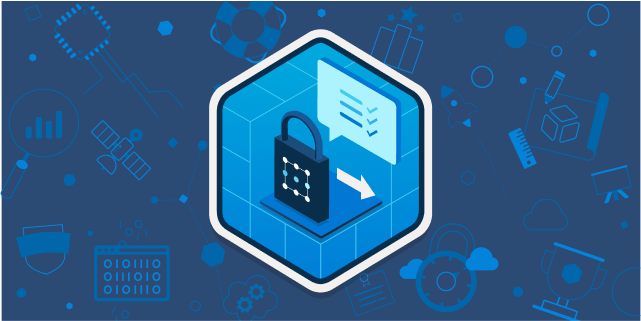Endpoints are the gatekeepers of your digital world. Whether it’s laptops, mobile phones, desktops, or IoT devices, each endpoint represents a doorway into your network—and cybercriminals know it. That’s why endpoint protection is no longer optional; it’s a critical pillar of your cybersecurity strategy.
With the rapid rise of remote work, cloud adoption, and bring-your-own-device policies, endpoint vulnerabilities have skyrocketed. Enter Microsoft: a trusted name that has developed a comprehensive security framework designed to guard against evolving threats. From threat detection and identity protection to policy enforcement and compliance, Microsoft Security Solutions in Saudi Arabia provide cutting-edge protection tailored to businesses operating in dynamic digital environments.
Understanding Endpoint Security
What Is an Endpoint?
An endpoint is any device connected to your network—think PCs, smartphones, tablets, servers, printers, and even smart TVs. These devices act as interaction points between users and business data, making them high-value targets for attackers.
Why Endpoints Are Prime Targets
Attackers love endpoints because they’re often the weakest link. Phishing emails, malicious downloads, and unsecured Wi-Fi networks make it easy for cyber threats to find their way in. With employees working from home, cafes, or across time zones, the attack surface has never been wider.
Core Microsoft Endpoint Protection Tools
Microsoft Defender for Endpoint
This enterprise-grade endpoint detection and response (EDR) solution uses AI and machine learning to identify, investigate, and neutralize threats often before users even know there’s a problem.
Microsoft Intune
Intune provides cloud-based mobile device and app management. It helps organizations enforce security configurations, deploy updates, and ensure compliance across all company-managed and BYOD endpoints.
Azure AD and Conditional Access
Azure Active Directory (AD) ensures secure identity access. Conditional Access allows organizations to define rules based on user behavior, location, and device status to allow or block access to critical data.
Microsoft Defender for Endpoint – Deep Dive
Real-Time Threat Detection
Powered by Microsoft Threat Intelligence, Defender continuously monitors and analyzes system behavior to detect threats as they unfold.
Attack Surface Reduction (ASR)
ASR rules proactively block known attack vectors such as executable content from email attachments or Office macros. This dramatically reduces the chances of malware infections before they start.
Behavioral Monitoring and AI-Driven Analysis
Rather than relying solely on signatures, Defender evaluates patterns in device behavior to detect advanced threats like zero-day exploits or insider attacks.
Automated Investigation and Remediation
No time to manually respond to every alert? Defender uses built-in automation to investigate threats and apply corrective actions keeping your IT team free for other priorities.
Integration with Microsoft 365 Security Suite
Microsoft’s true strength lies in its ecosystem. Defender and Intune work in harmony with Microsoft 365 for holistic security coverage.
Unified Security Center
With the Microsoft 365 Defender portal, you get a centralized dashboard to manage endpoints, emails, apps, and identities. This gives IT teams full visibility, reduces response time, and helps spot risks before they escalate.
Advanced Threat Analytics
Microsoft uses intelligent threat analytics to correlate data across your entire Microsoft 365 environment. You’ll know where an attack originated, how it spread, and which devices or users were affected.
Microsoft Secure Score
Secure Score provides a measurable indicator of your organization’s security posture. Think of it as a security “report card” with tailored recommendations to improve your defense systems over time.
Boosting Protection During Microsoft 365 Migration
Many businesses are in the process of or considering a Microsoft 365 Migration to streamline communication, collaboration, and data management. But transitions like these can also open up security gaps if not properly handled. Microsoft’s security stack ensures that during your migration, data remains encrypted, user identities are protected, and access is controlled without any compromise on productivity. Defender and Intune continue to monitor endpoints for abnormal behavior, even during cloud transitions.
Endpoint Configuration and Control
Policy Management with Intune
Intune lets you create security baselines and enforce encryption, password policies, and app controls. It supports both corporate and personal devices—so no one slips through the cracks.
Role-Based Access Control (RBAC)
RBAC ensures that only authorized personnel can access or modify sensitive settings. This reduces the risk of accidental changes and insider threats.
Device Compliance and Enforcement
Non-compliant devices can be automatically blocked from accessing business resources. This ensures only trusted devices are allowed through.
Identity and Access Protection
Azure AD Conditional Access
This feature allows organizations to define complex access rules. Want to block logins from high-risk countries or unknown devices? You can.
Multi-Factor Authentication (MFA)
Passwords alone are weak. MFA requires an additional verification step like an app or text making unauthorized access far less likely.
Single Sign-On (SSO) and Secure Authentication
SSO simplifies access while reducing risk. Employees only need to remember one strong password, reducing password fatigue and risky behavior.
Threat Intelligence and Automated Response
Microsoft Threat Intelligence Integration
Defender pulls data from Microsoft’s global threat database, leveraging trillions of signals to identify emerging threats in real-time.
Security Automation and Playbooks
Use pre-built or custom automation workflows to isolate infected devices, notify users, and initiate remediation all without lifting a finger.
Cloud-Based Endpoint Management
Remote Administration via Intune
From software updates to policy enforcement, Intune allows your team to manage devices anywhere on the planet.
Zero Trust Architecture
Zero Trust assumes every access request is suspicious. Microsoft enforces strict identity checks, device health validation, and session monitoring—ensuring total control.
Mobile and BYOD Protection
Mobile Threat Defense
Mobile devices are a goldmine for attackers. Defender protects against phishing, jailbreaking, malicious apps, and insecure Wi-Fi.
Isolated Access for BYOD
With Intune App Protection Policies, corporate data is sandboxed—so personal apps stay personal, and business data stays secure.
Hybrid Work and Endpoint Security
Secure Collaboration Tools
Microsoft Teams, SharePoint, and OneDrive are integrated with your security policies allowing file sharing and communication without data leakage.
Location-Independent Protection
No matter where employees login from home, coworking spaces, airports endpoint protection follows them.
Advanced Forensics and Auditing
Endpoint Detection and Response (EDR)
EDR provides a timeline of suspicious activity, allowing security teams to reconstruct attacks for root cause analysis.
Log and Event Monitoring
Microsoft generates detailed audit logs for every event, making incident investigation easier and compliance reporting seamless.
Compliance and Regulatory Readiness
Built-in Compliance Frameworks
Microsoft solutions support GDPR, HIPAA, ISO, and more reducing the burden on compliance teams.
Data Governance and Audit Trails
With automated data retention policies and detailed tracking, Microsoft ensures that no critical event goes undocumented.
How Microsoft Compares to Other Vendors
Unified, Scalable Ecosystem
While other vendors offer great tools, few can match Microsoft’s seamless integration across endpoint, cloud, and identity layers.
Cost-Effective with Licensing Tiers
Microsoft’s bundled licensing (e.g., Microsoft 365 E5) offers top-tier security tools at a predictable price reducing vendor sprawl and cost.
Real-World Applications
Large Enterprises
Fortune 500 companies use Microsoft Defender to secure tens of thousands of endpoints with minimal disruption and maximum uptime.
Small and Mid-Sized Businesses
With automated protections and intuitive dashboards, SMBs can manage cybersecurity effectively even without a large IT team.
Conclusion
The modern threat landscape doesn’t forgive mistakes. A single unsecured device can bring an entire network to its knees. That’s why investing in comprehensive endpoint protection is not just wise it’s necessary.
Microsoft’s suite of endpoint protection tools offers intelligent, layered defense that evolves with the threat landscape. Whether you’re protecting 50 devices or 50,000, Microsoft has the flexibility, intelligence, and strength to keep you safe.For businesses looking to deploy Microsoft’s robust security architecture with personalized, local support, Sky Technology delivers end-to-end solutions—helping you configure, manage, and optimize your protection strategy for long-term success.


